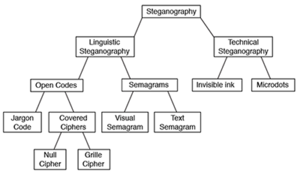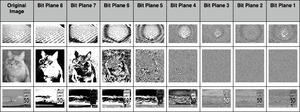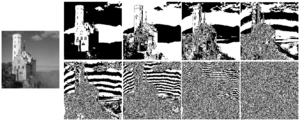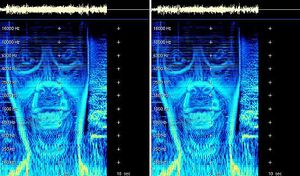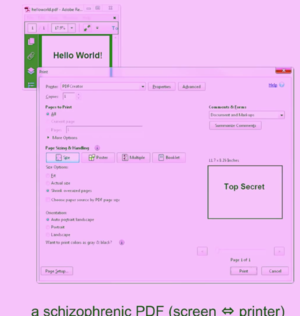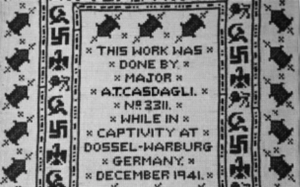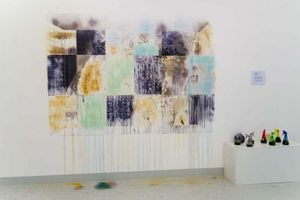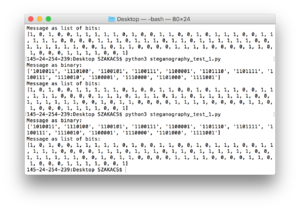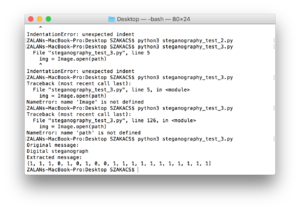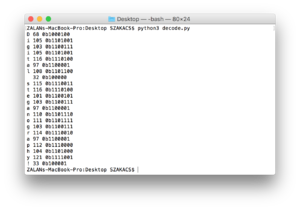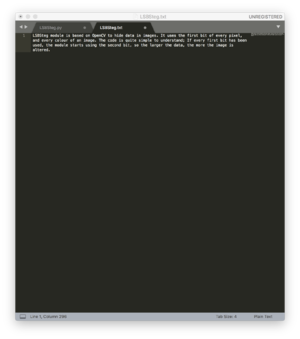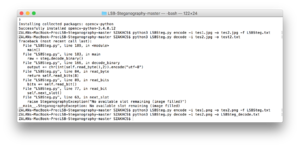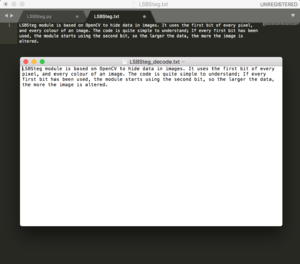Interfacing the law research Zalan Szakacs
Research ideas
Research questions:
- How would be possible to set up a pirate library through steganography?
- Which technologies would be used?
- Where would be the books hidden? JPG, PDF, MP3, WAV, EXIF?
- Which books would be included?
- How do you link them?
- Which interface to use?
- Which cataloging system to use?
- How could layering (text, images, metadata) become the navigation element?
- How could be pirated & steganographed books brought back to the "official" library?
- How could the reader find those books in the library?
- How would it be possible to translate the texts into audio and while playing the audio the images would appear in frequency levels?
For my research I want to look into using several steganography tools through python to explore abusing file formats, such as hiding books in other books, texts in images, images in audio, etc. These experiments would create the foundation for programming the steganographed pirate library.
Research thought:
interest in hiding files in other files (imagine a PDF with an audio file?) A sound file has a whole library inside it. JPEG has free space inside it. (metadata ... EXIF data .... ) Steganography
hiding books in other books
censorship
books on the blacklist
read&seek
pirate library is pirating it’s own files
hiding pirated books in “official” library
Brief history of Steganography
- 480 BC Wooden tablets and beeswax
494 BC Head tattoo
1558 Hidden messages in hard boiled eggs
1585 Beer barrel
1680 Musical notes
1800 Newspaper code
1915 Invisible ink
1941 Microdotes
1980's Thatcher's watermarking
1990 Digital steganography
2003 Network steganography
current VoIP steganography
Research references
→ Funky File Formats
Binary tricks to evade identification, detection, to exploit encryption and hash collisions.
→ Steganography
Digital steganography, a set of algorithmic techniques for hiding data in files, is often used to hide text messages (or other digital content) within the bits of an image. In contrast to cryptography, steganography allows to hide the very fact that you are trying to hide something, an aspect that makes it really desirable for hidden communications or classified information leakage.
→ Javier Lloret - On opacity (2016)
→ Hiding in Plain Sight. Amy Suo Wu's The Kandinsky Collective
→ british pow uses morse code to stitch hidden message during wwii
→ Introduction to Steganography
→ Using PIL
→ Hack This: Extract Image Metadata Using Python
→ ExifRead 2.1.2 Exif
→ Using Steganography to hide messages inside PDF files
Bibliography
Articles are saved in this Zotero library.
Python experiments
#1 experiment based on the script of steganography the art science of hiding things in other things part 1
# let's get our message set up
message = list('Steganography')
# convert to binary representation
message = ['{:07b}'.format(ord(x)) for x in message]
print("Message as binary:")
print(message)
# split the binary into bits
message = [[bit for bit in x] for x in message]
# flatten it and convert to integers
message = [int(bit) for sublist in message for bit in sublist]
print("Message as list of bits:")
print(message)
#2 experiment based on the script of the art and science of hiding things in other things part 2
from PIL import Image, ImageFilter
import numpy as np
message ='Digital steganography, a set of algorithmic techniques for hiding data in files, is often used to hide text messages (or other digital content) within the bits of an image. In contrast to cryptography, steganography allows to hide the very fact that you are trying to hide something, an aspect that makes it really desirable for hidden communications or classified information leakage.'
# first, open the original image
imgpath = 'steganography_test_1.bmp'
img = Image.open(imgpath)
# we'll use simple repetition as a very rudimentary error correcting code to try to maintain integrity
# each bit of the message will be repeated 9 times - the three least significant bits of the R,G, and B values of one pixel
imgArray = list(np.asarray(img))
""" given a value, which bit in the value to set, and the actual bit (0 or 1)
to set, return the new value with the proper bit flipped """
def set_bit(val, bitNo, bit):
mask = 1 << bitNo
val &= ~mask
if bit:
val |= mask
return val
msgIndex = 0
newImg = []
# this part of the code sets the least significant 3 bits of the
# R, G, and B values in each pixel to be one bit from our message
# this means that each bit from our message is repeated 9
# times - 3 each in R, G, and B. This is a waste, technically
# speaking, but it's needed in case we lose some data in transit
# using the last 3 bits instead of the last 2 means the image looks
# a little worse, visually, but we can store more data in it - a tradeoff
# the more significant the bits get, as well, the less likely they are to be
# changed by compression - we could theoretically hide data in the
# most significant bits of the message, and they would probably never
# be changed by compression or etc., but it would look terrible, which
# defeats the whole purpose
for row in imgArray:
newRow = []
for pixel in row:
newPixel = []
for val in pixel:
# iterate through RGB values, one at a time
if msgIndex >= len(message):
# if we've run out of message to put in the image, just add zeros
setTo = 0
else:
# get another bit from the message
setTo = message[msgIndex]
# set the last 3 bits of this R, G, or B pixel to be whatever we decided
val = set_bit(val, 0, setTo)
val = set_bit(val, 1, setTo)
val = set_bit(val, 2, setTo)
# continue to build up our new image (now with 100% more hidden message!)
newPixel.append(val) # this adds an R, G, or B value to the pixel
# start looking at the next bit in the message
msgIndex += 1
newRow.append(newPixel) # this adds a pixel to the row
newImg.append(newRow) # this adds a row to our image array
arr = np.array(newImg, np.uint8) # convert our new image to a numpy array
im = Image.fromarray(arr)
im.save("image_steg.bmp")
# open the image and extract our least significant bits to see if the message made it through
img = Image.open(imgpath)
imgArray = list(np.asarray(img))
# note that message must still be set from the code block above
# (or you can recreate it here)
origMessage = message[:20] # take the first 20 characters of the original message
# we don't use the entire message here since we just want to make sure it made it through
print("Original message:")
print(origMessage)
message = []
for row in imgArray:
for pixel in row:
# we'll take a count of how many "0" or "1" values we see and then go with
# the highest-voted result (hopefully we have enough repetition!)
count = {"0": 0, "1": 0}
for val in pixel:
# iterate through RGB values of the pixel, one at a time
# convert the R, G, or B value to a byte string
byte = '{:08b}'.format(val)
# then, for each of the least significant 3 bits in each value...
for i in [-1, -2, -3]:
# try to get an actual 1 or 0 integer from it
try:
bit = int(byte[i])
except:
# if, somehow, the last part of the byte isn't an integer...?
# (this should never happen)
print(bin(val))
raise
# count up the bits we've seen
if bit == 0:
count["0"] += 1
elif bit == 1:
count["1"] += 1
else:
print("WAT")
# and once we've seen them all, decide which we should go with
# hopefully if compression (or anything) flipped some of these bits,
# it will flip few enough that the majority are still accurate
if count["1"] > count["0"]:
message.append(1)
else:
message.append(0)
# even though we extracted the full message, we still only display the
# first 20 characters just to make sure they match what we expect
print("Extracted message:")
print(message[:20])
Encoding a text message based on the script of ASCII
for ch in "Digital steganography!":
d = ord(ch)
b = bin(d)
print(ch, d, b)
#4 experiment based on the script of https://github.com/RobinDavid/LSB-Steganography/LSB-Steganography]
#!/usr/bin/env python
# coding:UTF-8
"""LSBSteg.py
Usage:
LSBSteg.py encode -i <input> -o <output> -f <file>
LSBSteg.py decode -i <input> -o <output>
Options:
-h, --help Show this help
--version Show the version
-f,--file=<file> File to hide
-i,--in=<input> Input image (carrier)
-o,--out=<output> Output image (or extracted file)
"""
import cv2
import docopt
import numpy as np
class SteganographyException(Exception):
pass
class LSBSteg():
def __init__(self, im):
self.image = im
self.height, self.width, self.nbchannels = im.shape
self.size = self.width * self.height
self.maskONEValues = [1,2,4,8,16,32,64,128]
#Mask used to put one ex:1->00000001, 2->00000010 .. associated with OR bitwise
self.maskONE = self.maskONEValues.pop(0) #Will be used to do bitwise operations
self.maskZEROValues = [254,253,251,247,239,223,191,127]
#Mak used to put zero ex:254->11111110, 253->11111101 .. associated with AND bitwise
self.maskZERO = self.maskZEROValues.pop(0)
self.curwidth = 0 # Current width position
self.curheight = 0 # Current height position
self.curchan = 0 # Current channel position
def put_binary_value(self, bits): #Put the bits in the image
for c in bits:
val = list(self.image[self.curheight,self.curwidth]) #Get the pixel value as a list
if int(c) == 1:
val[self.curchan] = int(val[self.curchan]) | self.maskONE #OR with maskONE
else:
val[self.curchan] = int(val[self.curchan]) & self.maskZERO #AND with maskZERO
self.image[self.curheight,self.curwidth] = tuple(val)
self.next_slot() #Move "cursor" to the next space
def next_slot(self):#Move to the next slot were information can be taken or put
if self.curchan == self.nbchannels-1: #Next Space is the following channel
self.curchan = 0
if self.curwidth == self.width-1: #Or the first channel of the next pixel of the same line
self.curwidth = 0
if self.curheight == self.height-1:#Or the first channel of the first pixel of the next line
self.curheight = 0
if self.maskONE == 128: #Mask 1000000, so the last mask
raise SteganographyException("No available slot remaining (image filled)")
else: #Or instead of using the first bit start using the second and so on..
self.maskONE = self.maskONEValues.pop(0)
self.maskZERO = self.maskZEROValues.pop(0)
else:
self.curheight +=1
else:
self.curwidth +=1
else:
self.curchan +=1
def read_bit(self): #Read a single bit int the image
val = self.image[self.curheight,self.curwidth][self.curchan]
val = int(val) & self.maskONE
self.next_slot()
if val > 0:
return "1"
else:
return "0"
def read_byte(self):
return self.read_bits(8)
def read_bits(self, nb): #Read the given number of bits
bits = ""
for i in range(nb):
bits += self.read_bit()
return bits
def byteValue(self, val):
return self.binary_value(val, 8)
def binary_value(self, val, bitsize): #Return the binary value of an int as a byte
binval = bin(val)[2:]
if len(binval) > bitsize:
raise SteganographyException("binary value larger than the expected size")
while len(binval) < bitsize:
binval = "0"+binval
return binval
def encode_text(self, txt):
l = len(txt)
binl = self.binary_value(l, 16) #Length coded on 2 bytes so the text size can be up to 65536 bytes long
self.put_binary_value(binl) #Put text length coded on 4 bytes
for char in txt: #And put all the chars
c = ord(char)
self.put_binary_value(self.byteValue(c))
return self.image
def decode_text(self):
ls = self.read_bits(16) #Read the text size in bytes
l = int(ls,2)
i = 0
unhideTxt = ""
while i < l: #Read all bytes of the text
tmp = self.read_byte() #So one byte
i += 1
unhideTxt += chr(int(tmp,2)) #Every chars concatenated to str
return unhideTxt
def encode_image(self, imtohide):
w = imtohide.width
h = imtohide.height
if self.width*self.height*self.nbchannels < w*h*imtohide.channels:
raise SteganographyException("Carrier image not big enough to hold all the datas to steganography")
binw = self.binary_value(w, 16) #Width coded on to byte so width up to 65536
binh = self.binary_value(h, 16)
self.put_binary_value(binw) #Put width
self.put_binary_value(binh) #Put height
for h in range(imtohide.height): #Iterate the hole image to put every pixel values
for w in range(imtohide.width):
for chan in range(imtohide.channels):
val = imtohide[h,w][chan]
self.put_binary_value(self.byteValue(int(val)))
return self.image
def decode_image(self):
width = int(self.read_bits(16),2) #Read 16bits and convert it in int
height = int(self.read_bits(16),2)
unhideimg = np.zeros((width,height, 3), np.uint8) #Create an image in which we will put all the pixels read
for h in range(height):
for w in range(width):
for chan in range(unhideimg.channels):
val = list(unhideimg[h,w])
val[chan] = int(self.read_byte(),2) #Read the value
unhideimg[h,w] = tuple(val)
return unhideimg
def encode_binary(self, data):
l = len(data)
if self.width*self.height*self.nbchannels < l+64:
raise SteganographyException("Carrier image not big enough to hold all the datas to steganography")
self.put_binary_value(self.binary_value(l, 64))
for byte in data:
byte = byte if isinstance(byte, int) else ord(byte) # Compat py2/py3
self.put_binary_value(self.byteValue(byte))
return self.image
def decode_binary(self):
l = int(self.read_bits(64), 2)
output = b""
for i in range(l):
output += chr(int(self.read_byte(),2)).encode("utf-8")
return output
def main():
args = docopt.docopt(__doc__, version="0.2")
in_f = args["--in"]
out_f = args["--out"]
in_img = cv2.imread(in_f)
steg = LSBSteg(in_img)
if args['encode']:
data = open(args["--file"], "rb").read()
res = steg.encode_binary(data)
cv2.imwrite(out_f, res)
elif args["decode"]:
raw = steg.decode_binary()
with open(out_f, "wb") as f:
f.write(raw)
if __name__=="__main__":
main()

